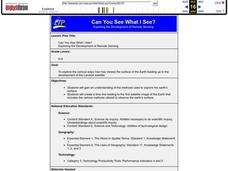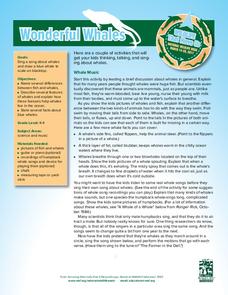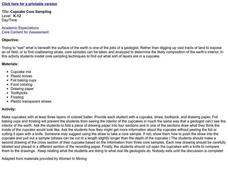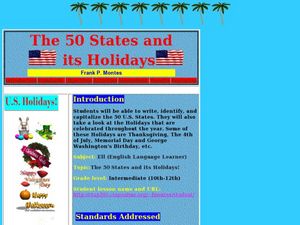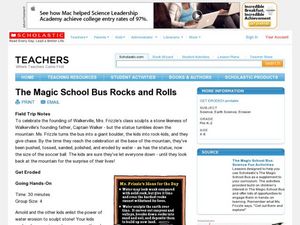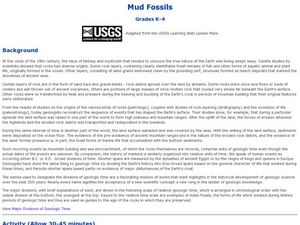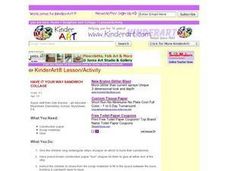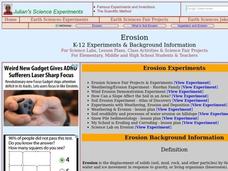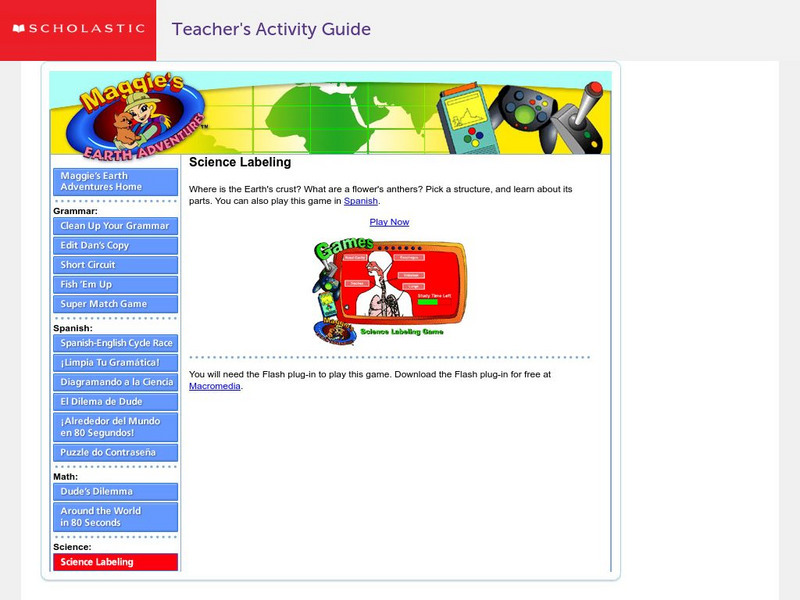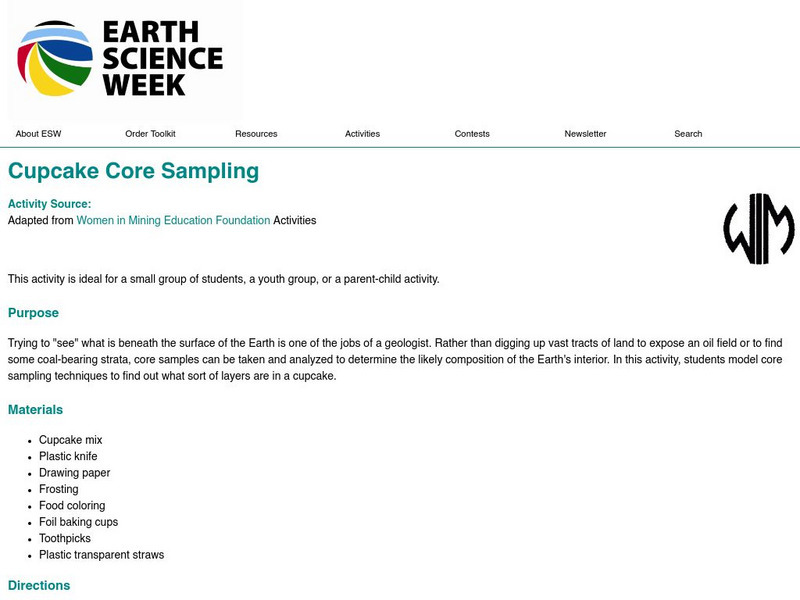Curated OER
Plate Tectonics: Kindergarten Lesson Plans and Activities
This unit focuses primarily on plate tectonics and plate boundaries surrounding continents. It contains pre- and post-lab sections that walk young geologists through plate movements in order to visualize what's going on inside Earth.
Captain Planet Foundation
Sorting Out Soils
Sift through soil and learn about why it's important for organic processes. After discussing what makes up soil, such as the living organisms and what types of soil have more nutrients, kids sample layers of mulch and deeper soil to...
Curated OER
Can You See What I See?
Students gain an understanding of the methods used to explore the earth's surface. Students create a time line leading to the first satellite image of the Earth that includes the various methods utilized to observe the earth's surface.
Curated OER
Earth's Just Peachy!
Students are introduced to the various layers of the Earth. Using fruit, they discover each layer and discover the use of similies in describing it. They watch a video to better describe each layer of the Earth and its purpose.
Curated OER
Wonderful Whales
Primary marine biologists consider the largest living animals on Earth, the whales. Introduce them to general anatomy, unique adaptations, and behaviors. Teach them to sing a song that will help them remember some of these facts....
Curated OER
CUPCAKE CORE SAMPLING
Students explore what is beneath the surface of the earth is one of the jobs of a geologist. Rather than digging up vast tracts of land to expose an oil field, or to find coalbearing strata, core samples can be taken.
Curated OER
The 50 States and its Holidays
Though the format of this ELL lesson is confusing (the standards listed are for plate tectonics, yet the objectives are for American geography and holidays), a teacher could glean some ideas from the main idea. Here, pupils complete a...
Curated OER
The Magic School Bus Rocks and Rolls
Students participate in a science experiment to show them the power that water erosion has to sculpt stone. They explore how running water moves earth and creates new landforms.
Curated OER
Mud Fossils
Students observe real fossils. In this science lesson, students make their own mud fossils by pressing material into the mud and letting it dry in the sun for 3-4 days. Students then get the fossils out displaying their mud...
Curated OER
Earthquakes
Students observe the melting of ice. In this phase change instructional activity, students observe ice as it melts. They discuss the process and create a Venn diagram comparing water and ice.
Curated OER
Help, I'm Melting!
Young scholars explore the parts of the rock cycle and the process of erosion as they build their own mountain and observe the effects of wind and rain as erosive agents.
Curated OER
Have It Your Way Sandwich Collage
You want to make a sandwich out of fabric and paper? If so, this art project provides the instructions needed. Learners will use a variety of fabrics and paper to construct a sandwich through collage. Tip: Have leaners describe the...
Curated OER
The Magic School Bus Out of This World
Students learn along with Ms. Frizzle's class. In this Magic School Bus lesson plan, students explore craters that objects of different sizes and weights (marbles, Ping-Pong balls, and aluminum foil balls) create.
Curated OER
Water Cycle and Ecosystems
Students explore the water cycle. In this investigative lesson, students examine the water cycle process. They will record their observations and discuss marine and freshwater ecosystems.
Curated OER
Erosion
Students examine soil erosion and what causes it. In this soil lesson students complete several experiments on soil erosion and the weathering process.
Curated OER
Cookie Bar Coal
Students observe the effect of heat and pressure on materials representing those involved in the formation of coal.
Curated OER
The Magic School Bus Out of this World
Pupils explore the craters that objects of different sizes and weights make. They use marbles, Ping-Pong balls, and aluminum-foil balls for this experiment. They investigate what would happen if they drop objects that aren't round.
Scholastic
Scholastic: Science Labelling Game
In a series of five interactive science games, students first study labeled diagrams to learn the names of the Earth's layers, of a flower's parts, of a fish's anatomy, of the human respiratory system, and of layers of the atmosphere....
American Geosciences Institute
American Geosciences Institute: Earth Science Week: Cupcake Core Sampling
In this activity, students learn about the technique of core sampling of the Earth by investigating the layers in cupcakes that they bake.
The Franklin Institute
The Franklin Institute: Land Mass Formation
The Franklin Institute has provided a demonstration that theorizes how the earth's crust was formed. This is a lesson plan that needs only a few materials.


